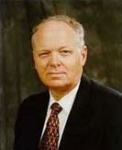
 |
View Articles by Dr. Anderson |
by Dr.
Ronald Anderson |
Dramatic change to individualism and the interpretive subjectivity of the performer. Complexity of music led to need of virtuoso conductor as "re-creator" and one to sort our relationships of what should be in the musical foreground, the middle ground, or the background (musical perspective); has a much more important task to influence the shaping of phrases. |
Use of Voices and Instruments
Notation
- Large choruses now common; some gigantic.
- Singers may outnumber instrumentalists.
- Vocal style is more soloistic in nature and demands mature sound with power adequate for climactic points in the music.
Ornamentation & Improvisation
- Composers generally very specific of what they wanted; most notational elements currently in use were used during this period.
- Editions of old music from this period are often heavily edited with expression marks that are inappropriate.
Tempo
- Expressive diminuendo from the dissonance to resolution is still part of the performance of the appoggiatura.
- Trills now usually begin on the main note.
Phrasing, Articulation, Dynamics
- Beethoven was one of first to suggest using the metronome (includes markings for his first eight symphonies, but was reluctant to give them in his last compositional period.)
- Brahms preferred verbal indications to numerical ones.
- Wagner maintained that correct tempi come from a thorough understanding of the score.
- "Tempo modification" Two schools:
a. Rigid objectivity, held by Mendelssohn
b. Unwarranted liberty, championed by Wagner- Rubato: "important part of expression in late Romantic music."
a. Classical rubato affected only the melody, while the accompaniment remained constant.
b. Romantic (expressive) rubato affected both melody & accompaniment.- Wagner's instructions about tempo:
a. Tempo modification is inherent in this style.
b. Best way to determine tempo is to sing parts, even instrumental parts!
c. True adagio can not be too slow.
- Regular phrase groups often give way to long irregular groupings.
- Beethoven was one of first to use signs for crescendi and decrescendi; also uses < > to show exact point of the climax of a phrase.
- Extremes of dynamics found: e.g.: "ppppp" in Verdi's Don Carlo.
| The Texas School Music Project is a source for ideas and information concerning pedagogical practices in the music classroom or rehearsal hall. The TSMP is a service provided to all music specialists by the faculty of the School of Music at Stephen F. Austin State University. For questions about this site contact [email protected]. Copyright © 2002-2019, The
School of Music at Stephen F. Austin State University |